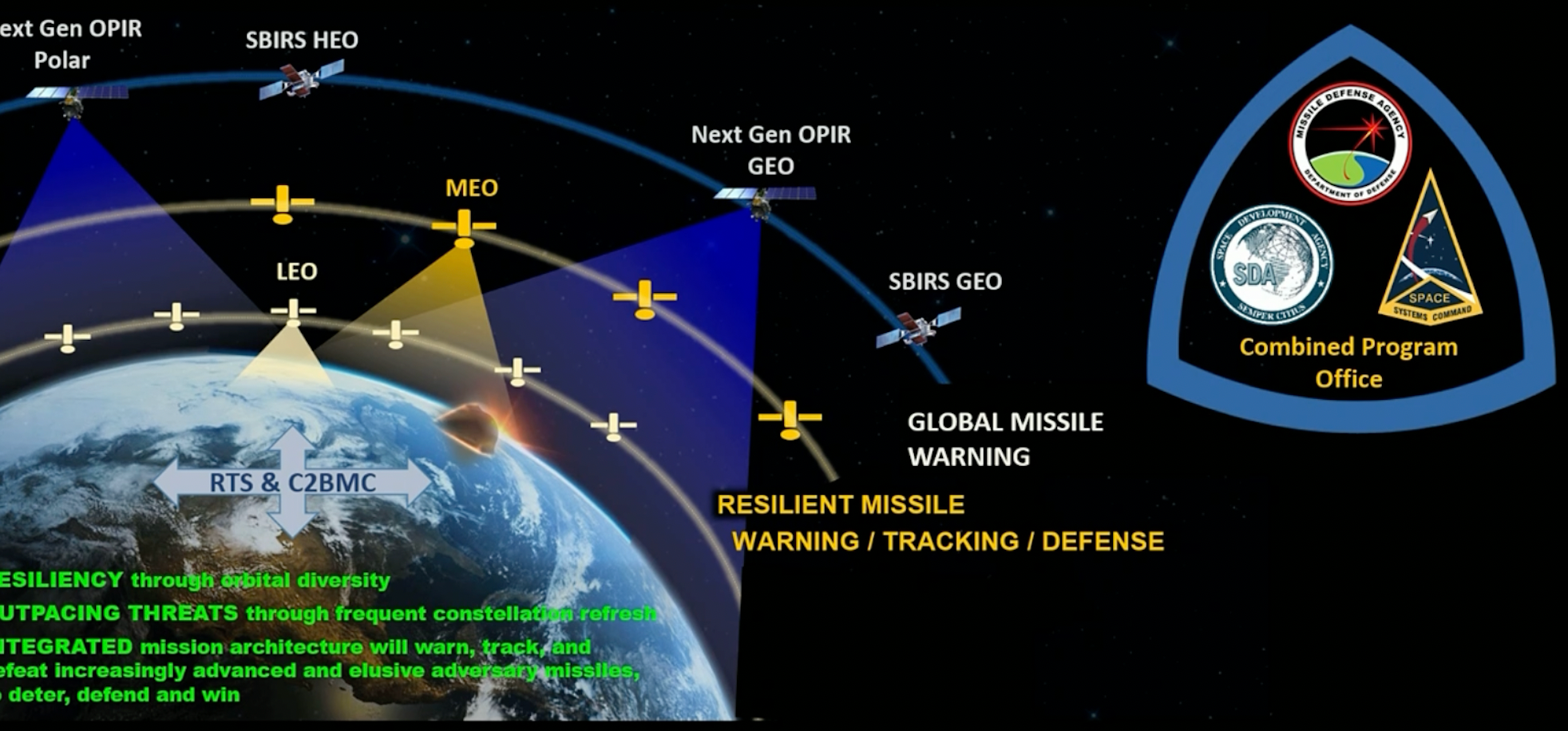WASHINGTON — The U.S. Space Force initiated a new phase in its missile defense satellite program. The Space Systems Command on Aug. 9 released a “request for prototype proposals” inviting vendors to submit designs for satellites known as Missile Track Custody Epoch 2, marking the second phase of the Space Force’s program to develop a missile-tracking network in medium Earth orbit (MEO).
The Epoch 2 program builds upon the foundation laid by Epoch 1, the first version of the MEO missile warning and tracking constellation being built by Millennium Space Systems which is projected to launch in late 2026 and early 2027. Raytheon had been selected to build three Epoch 1 satellites but its contract was terminated due to cost and schedule issues.
The Space Force is seeking prototype proposals for Epoch 2 so it can test and explore new technologies before moving to full-scale production.
The Missile Track Custody program is expected to involve a significant investment, with the Space Force projecting a budget of approximately $6 billion over the 2025-2029 period for the development and procurement of up to 18 satellites. These satellites will be optically cross-linked to ensure continuous surveillance and tracking of missile threats.
Missile-tracking satellites are designed to detect and monitor the launch and flight path of potential threats. These satellites use advanced sensors to identify the heat signatures of missile launches and track their trajectories, providing early warning and targeting data to defense systems.
Space Force officials said MEO satellites provide advantages over sensors in both lower orbits and geostationary orbits for persistent tracking of next-generation threats like hypersonic glide vehicles, which pose unique challenges due to their speed, maneuverability, and faint heat signatures.
The MEO satellite constellation is designed to be a component of the Department of Defense’s multi-orbit missile defense architecture. This layered approach includes a low Earth orbit tier of proliferated tracking satellites, as well as geosynchronous and highly elliptical orbit satellites that offer persistent coverage.







